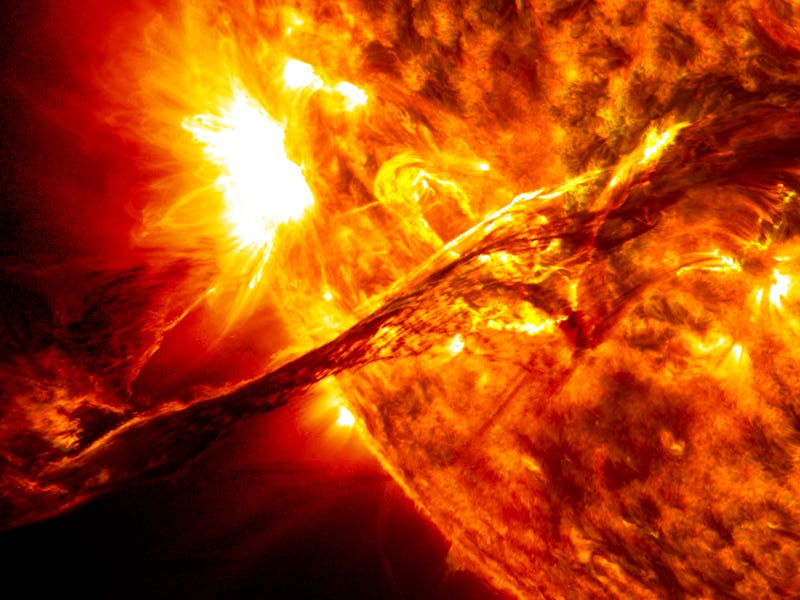Solar Storm Research Explains Dark Age's Energy Surge, Sparks Grid Rethink
And if it strikes again like it has before, we’re screwed

In 774 A.D and 993 A.D., the Earth was struck by intense bouts of subatomic energy. For a long time, scientists had theories about where these waves of particles were coming from and what was producing them, but we couldn’t confirm anything. We only knew they were from space because of the trace radioactivity left lingering in the air and other parts of the environment, like ice cores at the poles and even corals in the ocean. Now we know more. Apparently, a pair of solar storms powerful enough to permanently change Earth’s atmosphere once raged across the face of Sol.
The sun has been long known to generate strong magnetic fields that can store and release massive amounts of energy in the form of solar flares. When those magnetic loops create solar flares far beyond the surface of the sun, they’re called coronal mass ejections and, though they aren’t as concentrated, they can be much bigger. Still, it was previously thought a flare would be too weak to create the kinds of radioactive elements that characterized the 774 and 993 A.D. events.
It turns out the sun is a lot more powerful than we thought. While the sun has produced plenty of big magnetic explosions before, notably in 2003 and 2012, the researchers behind the new study believe the 774 event was five times stronger than any event since modern satellites began collecting data in 1956.
Here’s why you should care: In the modern age, an event of this nature would be a global catastrophe. Considering how dependent we’ve become on devices, satellites, and other equipment that runs on electricity, a solar storm like 774 would basically cripple people for months or even years to follow.
As Phil Plait wrote over on Slate:
“This is a threat we need to take very seriously. Unfortunately, it’s extremely expensive to mitigate. Our power grid in the US was constructed decades ago when our use of electricity was much lower. It was designed with lots of spare room for more power flowing through it, but over the years our appetite has grown, and the grid is currently very nearly at capacity. Big spikes now can cripple huge areas.”
Fortifying our electrical infrastructure from solar storms will cost an insane amount of money and time. But we don’t really have much of choice. Either we make investments now to protect those systems from solar events — or at the very least, increase the grid’s capacity — or we risk running into calamity down the road.
Or we could just do what our ancient ancestors did and start praying to the sun once again, begging it to spare us from disaster. It’s the cheaper strategy.